
Alton Glen Miller was an American big band founder, owner, conductor, composer, arranger, trombone player, and recording artist before and during World War II, when he was an officer in the US Army Air Forces. Glenn Miller and His Orchestra was one of the most popular and successful bands of the 20th century and the big band era. His military group, the Major Glenn Miller Army Air Forces Orchestra, was also popular and successful.
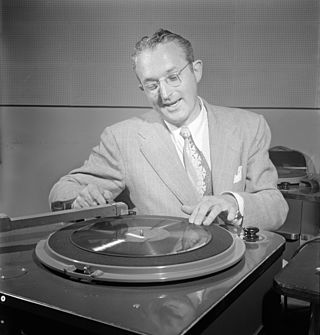
Thomas Francis Dorsey Jr. was an American jazz trombonist, composer, conductor and bandleader of the big band era. He was known as the "Sentimental Gentleman of Swing" because of his smooth-toned trombone playing. His theme song was "I'm Getting Sentimental Over You". His technical skill on the trombone gave him renown among other musicians. He was the younger brother of bandleader Jimmy Dorsey. After Dorsey broke with his brother in the mid-1930s, he led an extremely successful band from the late 1930s into the 1950s. He is best remembered for standards such as "Opus One", "Song of India", "Marie", "On Treasure Island", and his biggest hit single, "I'll Never Smile Again".
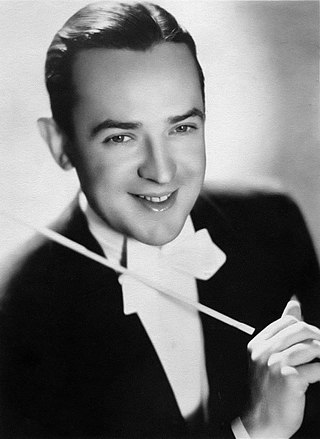
James Francis Dorsey was an American jazz clarinetist, saxophonist, composer and big band leader. He recorded and composed the jazz and pop standards "I'm Glad There Is You " and "It's The Dreamer In Me". His other major recordings were "Tailspin", "John Silver", "So Many Times", "Amapola", "Brazil ", "Pennies from Heaven" with Bing Crosby, Louis Armstrong, and Frances Langford, "Grand Central Getaway", and "So Rare". He played clarinet on the seminal jazz standards "Singin' the Blues" in 1927 and the original 1930 recording of "Georgia on My Mind", which were inducted into the Grammy Hall of Fame.
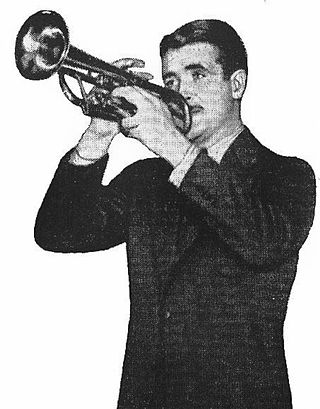
Roland Bernard "Bunny" Berigan was an American jazz trumpeter and bandleader who rose to fame during the swing era. His career and influence were shortened by alcoholism, and ended with his early demise at the age of 33 from cirrhosis. Although he composed some jazz instrumentals such as "Chicken and Waffles" and "Blues", Berigan was best known for his virtuoso jazz trumpeting. His 1937 classic recording "I Can't Get Started" was inducted into the Grammy Hall of Fame in 1975.

The Dorsey Brothers were an American studio dance band, led by Tommy and Jimmy Dorsey. They started recording in 1928 for OKeh Records.

Melvin James "Sy" Oliver was an American jazz arranger, trumpeter, composer, singer and bandleader.
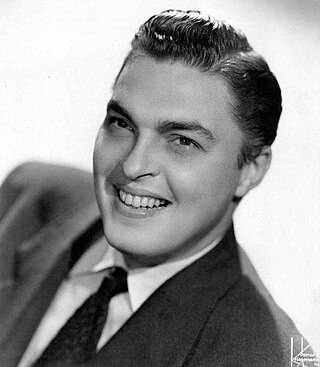
Robert Eberly was an American big band vocalist best known for his association with Jimmy Dorsey and his duets with Helen O'Connell. His younger brother Ray was also a big-band singer, making his name with Glenn Miller and His Orchestra.
"I Want to Be Happy" is a song with music by Vincent Youmans and lyrics by Irving Caesar written for the 1925 musical No, No, Nanette.
Irving "Babe" Russin was an American tenor saxophone player.
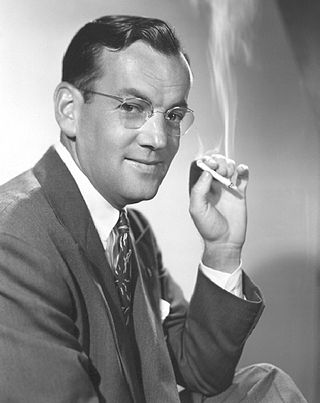
Between 1938 and 1944, Glenn Miller and His Orchestra released 266 singles on the monaural ten-inch shellac 78 rpm format. Their studio output comprised a variety of musical styles inside of the Swing genre, including ballads, band chants, dance instrumentals, novelty tracks, songs adapted from motion pictures, and, as the Second World War approached, patriotic music.
"Stairway to the Stars" is a popular song composed by Matty Malneck and Frank Signorelli, with lyrics by Mitchell Parish. It was based on a theme from Malneck and Signorelli's 1934 instrumental piece, "Park Avenue Fantasy."

"I'm Glad There Is You (In This World of Ordinary People)" is a song written by Jimmy Dorsey and Paul Madeira (sometimes credited as Paul Mertz) first published in 1941. It has become a jazz and pop standard.

"Room 1411" is a 1928 instrumental composed by Glenn Miller and Benny Goodman and released as a Brunswick 78 by Benny Goodman's Boys. The song was Glenn Miller's first known composition and was an early collaboration between Glenn Miller and Benny Goodman, who would become the most successful bandleaders of the Big Band Era during the 1930s and 1940s.

Dese Dem Dose is a 1935 instrumental composed by Glenn Miller and recorded by The Dorsey Brothers orchestra.

"In The Middle Of A Dream" is a 1939 song composed by Tommy Dorsey, Einar Swan, and Al Stillman. The song became a Top Ten hit in 1939 when released by Tommy Dorsey and His Orchestra.
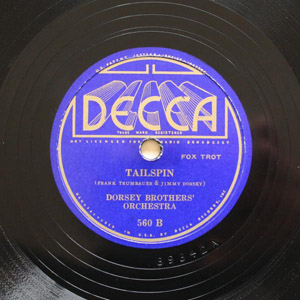
Tailspin is a 1934 song written by Jimmy Dorsey and Frankie Trumbauer. The song was released by Paul Whiteman and His Orchestra featuring Frankie Trumbauer in 1934 on Victor and by The Dorsey Brothers Orchestra in 1935 as a Decca single.

"Tomorrow's Another Day" is a 1935 song composed by Glenn Miller for the Dorsey Brothers Orchestra. The song was released as a 78 single by the Dorsey Brothers Orchestra on Decca Records.

"Harlem Chapel Chimes" is a 1935 jazz instrumental composed by Glenn Miller. The song was released as an A-side 78 single by the Dorsey Brothers Orchestra.
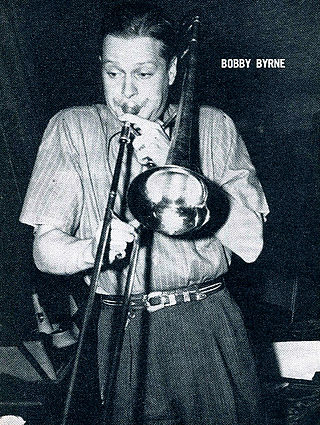
Robert Byrne was an American bandleader, trombonist, and music executive. His big band was well regarded. He flew aircraft in World War II, and later became a musical producer for television and albums credited to other artists.

















